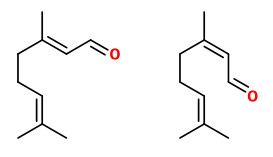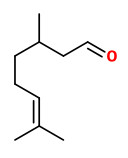Dies ist eine alte Version des Dokuments!
Backhousia citriodora F. Muell. - Myrtaceae - (Australian) lemon myrtle, lemon ironwood, lemon-scent backhousia, Zitronenmyrte
Evergreen tree, up to 20m high, native to Australia; leaves opposite, simple, narrow-elliptical, dark green above, pale below; flowers in terminal, umbel-like clusters, creamy white.
Flora of the Mid North Coast of New South Wales online Australian National Botanic Gardens.
Backhousia citriodora
„The common name reflects the strong lemon smell of the crushed leaves. „Lemon scented myrtle“ was the primary common name until the shortened trade name, „lemon myrtle“, was created by the native foods industry to market the leaf for culinary use. Lemon myrtle is now the more common name for the plant and its products… B.citriodora has two essential oil chemotypes: The citral chemotype is more prevalent and is cultivated in Australia for flavouring and essential oil. Citral as an isolate in steam distilled lemon myrtle oil is typically 90–98%, and oil yield 1–3% from fresh leaf. It is the highest natural source of citral. The citronellal chemotype is uncommon, and can be used as an insect repellent.“ http://en.wikipedia.org/wiki/Backhousia_citriodora
 citral (geranial, neral) |  citronellal |
„B. citriodora F. Muell. was found to exist as two chemotypes in which either citral or citronellal predominated.“
[Leaf oils of the genus Backhousia (Myrtaceae)., Brophy, J.J., Goldsack, R.J., Fookes, C.J., Forster, P.I., Journal of Essential Oil Research, Vol.7(3), 1995, 237-254]
„Leaf from the citral chemical variety of lemon myrtle, Backhousia citriodora, was examined for volatile constituents by GC and GC/MS analysis of both steam volatile oils and solvent extracts. Identified constituents present at more than 0.1 per cent on average in the oil were found to be myrcene (0.1-0.7%), 6-methyl-5-hepten-2-one (0.1-2.5%), linalool (0.3-1.0%), citronellal (0.1-0.9%), iso-neral (0.6-2.7), iso-geranial (1.0-4.2%), neral (32.0-40.9%) and geranial (46.1-60.7%)… Comparison of chemical and physical data with those of other citral-rich commercial oils showed that B. citriodora was richer in citral than both lemongrass (Cymbopogon flexuosus and C. citratus) and Litsea cubeba.“
[Backhousia citriodora F. Muell.(Myrtaceae), a superior source of citral., Southwell, I.A., Russell, M., Smith, R.L., Archer, D.W., Journal of Essential Oil Research, Vol.12(6), 2000, 735-741]
The CO2-extract contains essential oil (85-95%) with neral (30-40%) and geranial (55-70%), further traces of citronellol, geraniol and citronellal. http://www.flavex.com/fileadmin/flavex.de/user_upload/Spezifikation/Deutsch/Spezi_Zitronenmyrte_CO2-se_Extrakt_oekol_209_004.pdf

Backhousia citriodora, Botanischer Garten Berlin-Dahlem,
CC BY-SA 3.0, Author: BotBln
https://commons.wikimedia.org/wiki/File:Backhousia_citriodora_LeavesFlowers_BotGard0906.jpg
